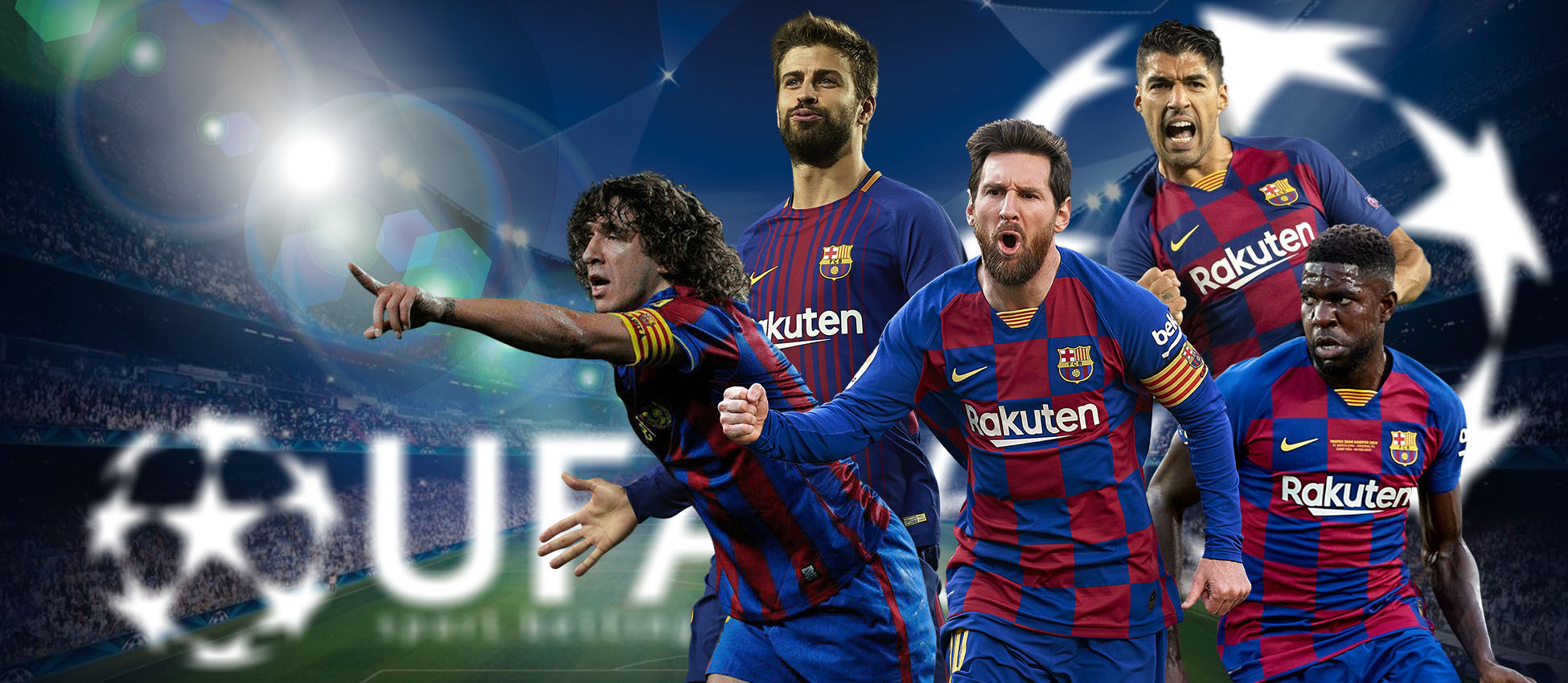
UFA168 เว็บพนันออนไลน์ จุดกำเนิดในการเดิมพันรูปแบบทันสมัยในปี 2024
UFA168 เว็บพนันออนไลน์ได้รับความนิยมมากขึ้น โดยการนำคาสิโนจริงๆย้ายเข้ามาอยู่ในรูปแบบของเว็บไซต์ที่สามารถเข้าใช้งานได้ง่ายกว่าการเดิมทางไปที่คาสิโนจริงๆ เพียงแค่ปลายนิ้วสัมผัสก็สามารถทำเงินได้เป็นก่อเป็นกำ การพัมนาทางเทคโนโลยีที่ทันสมัยมากขึ้นกว่าแต่ก่อนทำให้การเดิมพันพนันต่างๆนั้นง่ายขึ้นไปด้วย ถ้าหากลองใช้ Google ค้นหา จะพบเว็บพนันออนไลน์มากถึงราว 260,000,000 เว็บไซต์พนันออนไลน์ที่มีคำว่า Online gambling
ซึ่งแปลว่า การพนันออนไลน์ หรือถ้าหากเป็นคำว่า internet gambling ซึ่งแปลว่า การพนันทางอินเทอร์เน็ต ซึ่งถ้าใช้ Google ค้นหาจะพบประมาณ 150,000,000 เว็บไซต์ การพนันออนไลน์จึงไม่ใช่เรื่องที่ไกลตัวจากที่คิด บทความข้างต้นที่ท่านได้ทำการอ่านอยู่ในขณะนี้จะนำพาท่านเข้าสู่โลกของเว็บพนันออนไลน์
ในแง่มุมที่หลากหลายตั่งแต่ความเป็นมา ประเภทอุปกรณ์ วิธีขำระเงิน กลยุทธ์ทางการตลาด มาตรการในด้านต่างๆ เว็บไซต์การพนันออนไลน์ที่ได้รับการอนุญาติให้เปิดบริการทางอินเทอร์เน็ตแห่งแรกของโลกได้แก่ swiss lottery ในชื่อ loterie romande
UFA168 แหล่งรวมพนันออนไลน์ ที่ถูกกฎหมาย จริงหรือไม่
ufa168 เป็นเว็บพนันออนไลน์ที่มีความน่าเชื่อถือสูงและเป็นที่ยอมรับในวงการพนัน เป็นเว็บพนันที่ถูกกฎหมายได้ใบรับอนุญาตในการเปิดแบบถูกกฎหมายอีกด้วย ด้วยความปลอดภัยและความมั่นคง และครอบคลุมทั้งเกมคาสิโนและการเดิมพันกีฬาออนไลน์ ทาง UFABET168 มีระบบออโต้ที่สามารถฝากถอนเงินเป็นไปอย่างรวดเร็วและสะดวกสบาย และยัง รองรับการเติมเงินผ่าน True Wallte
เพื่อความสะดวกสบายมากยิ่งขึ้น ไม่ว่าคุณจะสนใจเกมคาสิโนออนไลน์ แทงบอล สล็อต บาคาร่า รูเล็ต หรือเกมอื่นๆ สามารถเลือกเล่นได้ตลอดเวลา 24 ชั่วโมง และยังมีค่าน้ำที่ดีที่สุด ทำให้เป็นเว็บพนัน uefa champions league ที่ยอดนิยมและใว้วางใจได้ เปิดบริการมานานมากกว่า 10 ปี ครบวงจรที่สุด สามารถเลือกเล่นได้ตามใจชอบ ไม่มีขั้นต่ำในการฝาก-ถอน รองรับมากกว่า 13 ภาษา
มีการกำหกนดรูปแบบอัตราการจ่ายเป็นไปตามมาตรฐานสากล ไม่ต้องมีกำหนดรูปแบบอัตราการจ่ายขึ้นมาเอง มีที่ไปและที่มาอย่างชัดเจน สามารถตรสจสอบได้ ประวัติการก่อตั้งอย่างชัดเจน สามารถสอบถามแอดมินได้ในการเกิดปัญหาต่างๆภายในเว็บพนัน ถามได้ตลอด 24 ชั่วโมง
เว็บพนัน ยูฟ่า168 ทำไมถึงได้รับความนิยม ในวงการพนัน
เว็บพนัน ยูฟ่า168 เป็นที่นิยมอย่างรวดเร็วมีหบายปัจจัยสนับสนุน ปัจจัยหลักอันดับแรกเลยก็คือความสะดวกสบาย เข้าถึงง่าย นับเป็นข้อดีอันดับต้นๆของการพนันออนไลน์ และก็เป็นอีกหนึ่งแรงจูงใจที่ส่งผลให้มีผู้คนหันมาเล่น เว็บพนันยูฟ่า168 ด้วยรูปแบบเว็บพนันออนไลน์ ทางเข้า UFABET168 เอื้อให้ผู้เล่นสามารถเข้าถึงได้จากหลากหลายสถานที่ ทั้งที่บ้าน ที่ทำงาน สถานศึกษา ผ่านคอมพิวเตอร์ มือถือ หรือ อุปกรณ์พกพาต่างๆ
เว็บพนันออนไลน์ที่ครบวงจรและได้รับความนิยมสูงสุดในไทย ทางเรามีประวัติศาสตร์ในการบริการที่ยาวนานและรักษามาตรฐานการบริการลูกค้าอย่างดีเสมอ ด้วยความเชี่ยวชาญในเว็บพนัน ทำให้เราได้รับความสนใจจากผู้เล่นมากมายทั้งประเทศ ไม่ว่าจะเป็นระบบเว็บไซต์ที่เสถียรหรือระบบฝากถอนอัตโนมัติรวดเร็ว ความน่าเชื่อถือของ เว็บพนันยูฟ่า168 มีความปลอดภัย ช่องทางการ ฝากถอนเงินมีความลปอดภัยสูง มีโปรโมชั่นที่น่าสนใจ

UFABET168 เครดิตฟรี เว็บพนันออนไลน์ ที่รองรับทุกแพลตฟอร์ม
UFABET168 เครดิตฟรี ที่สามารถเข้าใช้บริการได้ทุกแพลตฟอร์ม สามารถเข้าใช้บริการได้ด้วยมือถือทุกรุ่นที่มีการเชื่อมต่ออินเทอร์เน็ตไม่ว่าจะเป็นระบบปฏิบัติการ Android ios และ pc มีแค่มือถือเครื่องเดียวก็สามารถเข้าเดิมพันได้ง่ายๆ ไม่ต้องโหลดแอปพลิเคชั่นก็สามารถเล่นได้ สามารถเข้าใช้เว็บพนันออนไลน์ผ่านเว็บไซต์ได้เลย เข้าใช้งานง่ายได้เงินจริง ฝากถอนด้วยระบบออโต้ ปลอดภัยต่อข้อมูลส่วนตัว
สามารถเข้าใช้งานได้ทุกที่ที่ต้องการ เดิมพันเว็บพนันออนไลน์ อยู่ที่ไหนก็สามารถเล่นได้่เพียงแค่มีการเชื่อต่อสัญญานอินเทอร์เน็ต ไม่ต้องเสียเวลาเดินทางไปเล่นที่คาสิโนจริงให้เสียเวลาและเสียค่าใช้จ่าย นอกจากการเข้าใช้งานที่ง่ายดายแล้วการทำธุรกรรมทางการเงินก็ใช้เวลาไม่ถึง 10 วินาที เพียงคุณใช้บัญชีที่ลงทะเบียนกับ UFABET168 ทำการโอนเงินเข้าบัญชีฝากหน้าเว็บ แค่นี้ก็ไม่ต้องทำอะไรต่อนอกจากรอเงินเข้าบัญชีที่ทำการสมัครกับเว็บไซต์แล้วก็สามารถเข้าเล่นเกมได้เลย
UFA168 เข้าสู่ระบบ สิ่งสำคัญที่ควรรู้ ก่อนเริ่มเดิมพันพนันฟุตบอลออนไลน์
UFA168 เข้าสู่ระบบ การพนันฟุตบอลออนไลน์ สิ่งที่ ควรรู้ก่อนลงเดิมพันฟุตบอล การเดิมพันไม่ยากอย่างที่คิดแต่มีบางสิ่งที่ควรรู้ก่อนลงเดิมพัน อย่าลงเดิมพันทุมโปรดของคุณเพียงเพราะพวกเขาคือทีมโปรดของคุณ คุณต้องดูสถิติและหาทีมที่มีโอกาสชนะสูง ทีมโปรดของคุณอาจจะดีกว่าทึมอื่นๆ แต่ก็ไม่ได้แปลว่าพวกเขาจะชนะทุกครั้ง
การเดิมพันกี่ฬาเป็นกิจกรรมที่คุณสามารถสร้างรายได้จากการทายผลการแข่งขันกีฬา เป็นเพียงงานอดิเรกไปสู่ธุรกิจที่เต็มเปื่ยมซึ่งสร้างรายได้หลายพันล้าน สิ่งแรกที่คุณต้องทำคือระบุเว็บไซต์เดิมพันกีฬาที่ดีที่สุด เพื่อค้นหาเว็บไซต์ที่เสนออัตราต่อรอง โบนัส และโปรโมชั่นที่ดีที่สุด ไซต์เหล่านี้มักเชื่อถือได้
ความสำคัญต่อการเดิมพันที่ประสบความสำเร็จ ยิ่งคุณรุ้เกี่ยวกับทีมที่ลงเดิมพันมากเท่าไหร่ ก็มีโอกาสชนะการเดิมพันสูงมากยิ่งขึ้น นักเตะ ทีม โค้ช และอื่นๆอีกมากเท่าไหร่โอกาสชนะก็สูง เป็นสิ่งสำคัญอันดับต้นๆ ที่ผู้ลงเดิมพันควรรู้
เดิมพันฟุตบอล ufa168 ในกาเดิมพันฟุตบอลมีประเภทใดบ้าง
ufa168 เว็บเดิมพันฟุตออนไลน์ที่ได้รับความนิยมมากที่สุดในตอนนี้ แหล่งรวมการเดิมพันกี่ฬาทุกแบบ หวย มวย สล็อต และฟุตบอล การเดิมพันพนันบอลมีหลากหลายประเภท ให้ลูกค้าได้เข้ามาสนุกได้ตลอดเวลา ทั้ง บอลเต็ง บอลชุด บอลสเต็ป จำนวนลูกเตะมุม ใบเหลืองอดง1×2 และยังสามรถแทงสดได้อีก แทงบอลสดคืออะไร
บอลสดคือ เราสามรถแทงบอลขณะบอลเตะแล้ว และยังสามรถเข้ามาดูบอลสดได้ทุกลีกทุกมุมโลก ลีกใหญ่ยุโรปและไทยลีกก็สามรถแทงได้ตลอดเวลว24ชั่วโมง ที่เว็บของเรา เดิมพันได้อย่างปลอดภัยไร้กังวล ทางการฝาก-ถอนก็ง่ายนิดเพียงแค่คลิกไม่กี่ครั้งก็สามารถทำรายการได้ภายในไม่กี่วิ และตอนนี้เว็บ ufabet168 ยังโปรโปรโมชั้นและอื่นๆอีกมากมายให้ท่านได้มาลองสัมผัสประสบการณ์ที่น่าตื่นเต้น สมัครสมาชิก มาเลยตอนนี้

ประวัติของ ฟุตบอล
จุดเริ่มต้นของกีฬาฟุตบอลไม่มีหลักฐานที่ชี้ชัดเจนว่าต้นกำเนิดของกีฬาฟุตบอลนั้นเกิดจากที่ใดกันเเน่เเต่อย่างไรก็ตามจุดเริ่มต้นของกีฬาฟุตบอลที่มีหลักฐานอย่างเป็นทางการ เริ่มตั้งเเต่ ปี ค.ศ. 1888 หรือพ.ศ 2406 ส่วนกีฬาฟุตบอลในประเทศไทย เริ่มเข้ามาในยุคพระบาทสมเด็จพระจุลจอมเกล้าเจ้าอยู่หัว รัชกาลที่ 5
ด้วยกีฬสฟุตบอลนั้นต้องมีอุปกรณทหลากหลายอย่างเข้ามาในการใช้ในการเล่นเเละการเเข่งขันอย่างเเรกคือ ลูกฟุตบอล ลูกฟุตบอลนั้นมีลักษณะเป็นทรงกลม ขนาดเส้นรอบวงไม่เกิน 27-28 นิ้ว เเละน้ำหนัก 400-450 กรัม ในการลงทุนนั้นต้องมีทีมในการเเข่งขันเเละเเต่ละฝั่งนั้นต้องมีจำนวนฝั่งละ 11 คน โดยที่เป็นผู้รักษาประตู 1 คน มีหน้าที่ป้องกันไม่ให้ฝั่งตรงข้ามยิงประตูได้
เเละวิธีในการลงเล่นกีฬาฟุตบอลนั้นผู้เล่นจะใช้เท้าในการเล่นเป็นหลัก โดนสามารถใช้อวัยวะส่วนอื่นที่ไม่ใช่เเขนเเละมือในการเล่นโดยเป้าหมายคือการทำประตูตรงข้ามให้ได้เวลาในการลงเล่นเเบ่งออกเป็น2 ครึ่ง ครึ่งละ45 นาทีถ้าทำประตูเสมอกันต้้องมีการยิงลูกโทษเพื่อทีมที่ชนะเเละปัจจุบันนี้ก็ยังนิยมเล่นกีฬาฟุตบอล
ยูฟ่า168 ทำไมถึงมีมาตรฐานในการรักษาความปลอดภัย
ยูฟ่า168 มีมาตรฐานในการรักษาความปลอดภัยอยู่แล้ว เพราะแต่ก่อนมีการแฮ็กข้อมูลและเงินข้อผู้ใช้ จึงทำให้มีการรักษาความปลอดภัย เพื่อให้ผู้ใช้งานมั่นใจในความปลอดภัยของข้อมูลส่วนตัวและเงินที่ใช้ในการเดิมพันโดย ีufa168 ใช้ระบบการเข้ารหัสข้อมูลขั้นสูงเพื่อป้องกันการรั่วไหลของข้อมูลส่วนตัว
นอกจากนี้ยังมีระบบตรวจสอบและป้องกันการฉ้อโกงเพื่อความสะดวกสบายและความมั่นใจในความปลอดภัยข้อมูล สามารถใว้วางใจได้ 100 % มาตรฐานในการรักษาความปลอดภัยนั้นเน้นหนาอย่างเห็นได้ชัดว่า ไม่เคยประวัติการรั่วไหลข้อมูลส่วนตัวของสมาชิกหลายๆคน เป็นการรักษาความปลอดภัยที่เป็นอันดับ 1 ในเว็บพนันออนไลน์
ถึงแม้การเข้าถึงจะง่ายยูฟ่า168 เป็นแพลตฟอร์มที่สามารถเชื่อถือได้ ใช้เครื่องมือการรักษาความปลอดภัยออนไลน์ อาจมีซอฟต์แวร์หรือเครื่องมือที่ช่วยป้องกันข้อมูลของเราได้
การเดิมพันฟุตบอล ยูฟ่าเบท 168 ขั้นต่ำในการเดิมพันเท่าไร
ยูฟ่าเบท 168 เว็บพนันกีฬาออนไลน์และอื่นอีกมาก ในทุกรูปแบบของการพนัน ลูกสามรถเข้ามาดูบอลสดได้ก่อนใครที่นี่ที่เดียว เพราะทางเรามีสปอนเซอร์ติดสนาม ที่ถ่ายสดให้เราดูได้โดยไม่มีค่าใช้จ่ายๆ สามารถ ติดต่อ เดิมพันได้ตลอดเวลา24ชม. ทุนน้อยก็เดิมพันกับเราได้ บอลเดี่ยว บอลสเต็ป ตั้ง 1 คู่ไปจนถึง 12คู่
เริ่มต้นเติมพันแค่10บาทไปจนถึง1,000,000บาท และลูกล้าไว้วางใจทางเว็บได้เลย แทงได้เราจ่ายแทงเสียเรามียอดเสียคืนให้ในทุกๆสัปดา ขอเสนอดีๆแบบนี้ไม่มีที่ไหนแล้วที่เสนอให้ลูกได้เดิมพันได้อย่างเพลิดเพลิน รองรับทุกรูปแบบแพลตฟอร์มออนไลน์ ทั้ง Android และ IOS ก็สามรถเข้าร่วมสนุกกับเรา ฝากเริ่มต้นแต่1บาทไปจนถึง1,000,000 บาท เว็บของเราเป็นเว็บที่ได้การรับรองจากเว็บแทงบอลสากลโลก รับรองได้ว่าปลอดภัยเรื่องการเงินหายห่วงปลอดแน่นอน

UFA168 ทางเข้า มือถือ สามารถเล่นได้ตลอดเวลา 24 ชั่วโมงหรือไม่
UFA168 ทางเข้า มือถือ เว็บพนันออนไลน์ที่ดีที่สุดในโลก ณ ตอนนี้ ที่มาพร้อมกับทีมงานมืออาชีพที่พร้อมให้บริการตลอด 24 ชั่วโมง ไม่ว่าจะอยู่ไหนทำอะไรก็สามารถเข้ามาเดิมพันกับเว็บพนันออนไลน์ของเราได้เพียงแค่มีมือถือและอินเทอร์เน็ตก็สามารถเข้าเดิมพันผ่านเว็บไซต์ของเราได้เลย
UFABET168 เป็นสุดยอดเว็บพนันออนไลน์ที่ดีที่สุด เพราะเราคือเว็บยูฟ่าที่มีผู้เล่นเข้ามาใช้บริการมากที่สุด โดยเราให้ความสำคัญใรการให้บริการที่รวดเร็วและปลอดภัย มีคุณภาพและมีระบบปฏิบัติการที่เสถียรที่สุด คุณสามารถแทงบอลได้ตลอดเวลา ไม่มีปัญหา ไม่ว่าจะเป็นการ แทงบอลครึ่งเวลา หรือ แทงบอลสด ก็สามารถทำได้ นอกจากนี้ยังมีระบบการทำงานต่างๆมากมายที่พร้อมจะอำนวยความสะดวกในการใช้งานอีกด้วย
วิธีสมัครสมาชิก ยูฟ่า168
เว็บพนัน ยูฟ่า168 ในตอนนี้่ได้รับความนิยมในการเข้ามาลงทุนกันอบ่างหลากหลายทั้งนักลงทุนมือใหม่เเละนักลงทุนที่ใช้บริการกับทางเว็บยูฟ่า168 สมัครยูฟ่า168 มาอย่างเนินนานตอนนี้ทางเว็บของเราได้ทำการปรับเปลี่ยนระบบที่มั่นคงเเละปลอดภัยมากที่สุดในวงการพนันออนไลน์ได้ทำการนำเกมทั่วโลกที่สามารถทำกำไรได้อย่างล้นหลาม
มาไว้ที่เว็บของเราเพื่อให้นักลงทุนได้เลือกตามความถนัดของตัวเองมากที่สุดด้วยสมัยนี้เทคโนโลยีของโลกไปไกลเเละพัฒนากว้างขว้างมากทางเว็บได้ติดตั้งระบบที่ป้องกันข้อมูลส่วนบุคคลของนักลงทุนทุกคนด้วยระบบที่ปลอดภัย
กลยุทธ์ที่จะเอาชนะ เว็บUFA168 เว็บพนันฟุตบอล
เว็บUFA168 เว็บพนันรายใหญ่ที่สุดในโลกเว็บมาตรฐานสากล เว็บไซต์โดยตรงลิขสิทธิ์แท้ สมัครมาเป็นสมาชิกกับเราตอนนี้ มีกลุ่ม ทีเด็ดเซียนบอล ให้ลูกค้าได้เข้าไปพูดคุยกับเหล่าเซียนๆทั้งหลายได้ตลอดเวลา กลยุทธ์หรือเทคนิคเอาชนะการแทง ไม่ยาก วิเคราะห์การแข่งขันคู่ที่จะเดิมพัน ย้อนหลัง 10 นัดหลังหรือ สถิติฟอมการเล่นในปัจจุบัน หรือเข้ากลุ่มเซียนบอล UFABET ทางเราจะมีเซียนบอลคอยให้ทีเด็ดหรือ คู่บอลที่ได้รับการโหวดมากที่สุดในวันนั้นๆ
หรือก็สารถดูบอลก่อนที่จะเดิมพันก็ได้ ดูทาง ดูเชิง อัตราต่อรอง หรือค่าน้ำ เป็นหลัก อัตราต่อรองหรือค่าน้ำจะไหลขึ้นหรือไหน ก็ขึ้นอยู่กับการสัมผัสในคู่นั้นๆ หรือนับเรียงอันดับตารางคะแนนในลีกๆนั้น ส่วนมากเหล่าเซียนจะเลือกทีมที่อยู่มีอันดับสูงกว่าของทีมที่พบกันหรือ อัตราต่อรอง โอกาสบอลเข้ามาก75% แต่ความเสี่ยงลูกกลมๆก็มีถึง25% หรือใช้ดวงล้วนๆ
ยูฟ่า168 รองรับระบบอะไรบ้าง
ยูฟ่า168 เป็นเว็บไซต์ที่มีความทันสมัยและเป็นที่นิยมในประเทศไทยสำหรับการเดิมพันออนไลน์ ด้วยความสะดวกสบายคุณสามารถเข้าเล่นผ่านมือถือทั้งระบบ IOS และ Android โดยไม่ต้องดาวน์โหลดแอปพลิเคชั่นและไม่มีข้อจำกัดในการเล่นผ่านเว็บไซต์ คุณสามารถเลือกเดิมพันในหลากหลายรูปแบบได้
เช่น แทงบอลออนไลน์, บอลเดี่ยว, บอลสเต๊ป, บอลชุด และอื่นๆอีก 20 กว่าประเภท นอกจากนี้ยังมีบริการคาสิโนออนไลน์ ซึ่งรวมถึงเกมบาคาร่า, สล็อต, รูเล็ต, ไฮโล, และเกมยิงปลาให้คุณเลือกเล่น และยังมีหวยออนไลน์สำหรับคนที่ชื่นชอบแทงหวย ด้วยราคาดีและบริการตลอด 24 ชั่วโมง

ufabet168 การรองรับภาษาที่มากกว่า10ภาษา
ufabet168 เป็นเว็บพนันออนไลน์ที่มีความหลากหลายในระบบภาษาซึ่งมีรูปแบบทางเข้าที่ใช้งานง่ายที่สุด รองรับถึง 13 ภาษา อังกฤษ อินเดีย ฝรั่งเศส เยอรมัน อิตาลี ญี่ปุ่น เกาหลี โปแลนด์ โปรตุเกส บราซิล สเปน ไทย เวียดนาม เป็นเว็บพนันที่สะดวกสบายอย่างแน่นอน ไม่ว่าทั่วโลกจะเล่นก็สามารถเข้าใจได้แน่นอน
เพราะแต่ละภาษานั้น มาถึง 17 ภูมิภาค นอกจากนี้ยังมีคุณสมบัติที่ทันสมัยและกราฟิกที่สวยงาม พร้อมทั้งระบบการใช้งานที่เป็นภาษาไทยที่ทำให้พนักงานสามารถเข้ามาทำการเดิมพันได้อย่างง่ายดาย ซึ่งเป็นทางเลือกที่ควรพิจารณาในการเล่นพนันออนไลน์ เป็นเว็บพนันออนไลน์ที่เปิดบริการตลอดเวลา 24 ชั่วโมง
ข้อดีและข้อเสีย ในการเดิมพันฟุตบอล
ข้อดี
1.เพิ่มความสนุก ตื่นเต้นในการดูฟุตบอล ที่ช่วยเพิ่มอรรถรศในการเชียร์บอลให้คุณ
2.สร้างรายได้เพิ่ม หากคุณมีทีมเชียร์แน่นอนคุณย่อมมั่นใจในฝีเท้าของทีมที่คุณเชียร์ เลือกทีมในดวงใจ ไม่เพียงแค่ยินดีกับชัยชนะของทีมในดวงใจ แต่จบเกมส์ พร้อมรับเงินทันที
3.อยากลงทุน แต่มีงบน้อย บางทีคุณก็อยากจะนำเงินที่มีในกระเป๋า ไปลงทุนให้งอกเงยแต่ด้วยจำนวนเงินที่จำกัดทำให้จำกัดในการแทงบอล เพราะใช่ทุนน้อยแทงบอลไม่มีขั้นต่ำ และสามารถวางเดิมพันได้ตามที่ตัวคุณเองกำหนด บวกกับเทคนิคการวิเคราะห์บอล
4.การเดิมพันกีฬาเริ่มต้นได้ง่าย คุณไม่จำเป็นต้องใช้เครื่องมือหรือผูกมัดทางการเงินใดๆก่อนเริ่มต้นเดิมดันฟุตบอล
5.คุณสามารถึกฝนการเป็นมืออาชีพในการเดิมพันโดยการเรียนรู้เทคนิคการเล่นเกมภายใน คุณต้องอดทนในการเดิมพันและพร้อมที่จะรับการสูญเสีย
ข้อเสีย
1.คุณสามารถเสียเงินได้ ผู้คนที่ติดการพนันกีฬาบางครั้งหันไปก่ออาชญากรรมเมื่อแหล่งเงินที่ถูกต้องตามกฎหมายหมดลง ซึ่งอาจเกี่ยวข้องกับการโจรกรรมหรือการยักยอก
2.การติดพนันกีฬาอาจส่งผลให้ประสิทธิภาพในการทำงานลดลง นอกจากนี้ยังสามารถนำไปสุ่การเจ็บป่วยที่เพิ่มชึ้นหรือการขาดงานอื่นๆทำให้ตกงาน
3.ความเสี่ยงในการสูญเสียเงิน การเล่นบอลออนไลน์เป็นการพนันซึ่งมีความเสี่ยงสูญเสียเงินได้ การตัดสินใจที่ผิดพลาดอาจทำให้คุณสูญเสียเงินได้มากกว่าที่คาดหวัง
4.ความเสี่ยงในเรื่องความปลอดภัย หากไม่ใช้เว็บไซต์หรือแพลตฟอร์มที่เชื่อถือได้ อาจมีความเสี่ยงในเรื่องการโจมตีไซเบอร์หรือการหลอกลวง
5.เสียความสมดุลในชีวิต หากไม่มีการจัการเงินอย่างเหมาะสม อาจทำให้เสียความสมดุลในชีวิตได้ โดยเฉพาะหากเกิดิดพนันเกินขนาดส่งผลให้เกิดปัญหาในเรื่องการเงินและความสัมพันธ์
ยูฟ่า168 สามารถทำกำไรได้มากแค่ไหน ในการเดิมพันฟุตบอล
ยูฟ่า168 เว็บตรงที่มาพร้อมปรากฎการณ์ใหม่สะท้านวงการด้วยรูปแบบของการให้บริการที่ยิ่งใหญ่ที่สุด ทำกำไรได้มากมหาศาล ทันสมัยกว่าเดิม จพได้สัมผัสกับฟังก์ชั่นที่ใช้งานง่าย สะดวกรวดเร็ว และมีความปลอดภัยขั้นสูง มาตรฐานและบริการระดับพรีเมี่ยม ฝากถอนออโต้ โปรโมชั่นสิทธิพิเศษจัดเต็มตั้งแต่สมัครสามาชิกครั้งแรก แทงบอลออนไลน์ใน เว็บพนันUFA168 ให้ราคานํ้าที่ดีที่สุด
คืนคอมมิชชันเต็ม มีราคาไหลที่ไม่ค่อยผกผัน ให้อัตราการจ่ายผลตอบแทนที่สูงอยู่ตลอด สะดวกเข้าทางไหนก็เลือกได้อย่างอิสระ รองรับผู้เล่นที่เข้าใช้งานต่อวันได้จำนวนมากไม่มีจำกัด และนั่นก็อาจทำให้ใครหลายๆคนสงสัยว่า ทำไม แทงบอลออนไลน์ จึงนิยมมากในประเทศไทย เพราะอะไรคนส่วนใหญ่หันมาเล่นเกมเดิมพันนี้ เพราะมีตรงรางแข่งขั้นฟุตบอลให้เล่นตลอดเวลา สามารถที่จะแทงบอลได้ทุกวัน หรือเรียกว่าทุกชั่วโมงเลยก็ได้
เว็บเดิมพันฟุตบอล มีโปรโมชั่นอะไรบ้างที่น่าสนใจ
1.โบนัสต้อนรับที่ยอดเยี่ยม
2.โบนัสโปรโมชั่นคืนยอดเสีย
3.โปรโมชั่นที่สุดพิเศาและสิทธิพิเศษสำหรับผู้เล่นทั่วโลก
4.โบนัสโปรโมชั่นทุกสัปดาห์
5.โปรโมชั่นแต้มสะสมแลกรางวัล

ยูฟ่า168 วิธีการเข้าเดิมพันแทงบอลออนไลน์
วิธีการเดิมพันฟุตบอลในเว็บพนันออนไลน์
- เลือกเว็บพนันออนไลน์ที่น่าเชื่อถือและปลอดภัยต่อข้อมูลส่วนตัว
- สมัครสมาชิกหรือสร้างบัญชีผู้ใช้และฝากเงิน
- เลือกลีกหรือการแข่งขันที่คุณต้องการที่จะเดิมพัน
- เลือกประเภทในการเดิมพันฟุตบอล รวมถึงการแทงเต็มเวลา แทงครึ่งแรก แทงบอลสเต็ปหรืออื่นๆ
- พิมพ์จำนวนเงินที่คุณต้องการวางเดิมพันแล้วกดยืนยัน
การแทงบอลสเต็ป หรือ Mix parlay หรือบอลสเต็ป
- แทงบอลสเต็ปคือการเดิมพันที่รวมหลายๆคู่ในบิลเดียวกัน
- เลือกทีมที่คุณคาดว่าจะชนะในเกมหลายๆรายการ
- การชนะเดิมพันบอลสเต็ปทุกทีมที่คุณเลือกเดิมพันจะต้องชนะทั้งหมดฃ
- การเดิมพันบอลสเต็ปมีผลตอบแทนสูงมากแต่ความเสี่ยงก็สูงมากเช่นกัน
อัตราต่อรอง
- อัตราต่อรองคือการที่เจ้ามือบอลกำหนดราคาบอลสำหรับความน่าจะเป็นในการชนะของทีมแต่ละทีม
- หากทีมมีการต่อรองที่ต่ำ นั่นหมายความว่าทีมนั้นมีโอกาศชนะมากกว่า
- คุณควรดูสถิติและข้อมูลที่ต้องการแทง และควรทำการวิเคราะห์อย่างรอบคอบก่อนที่จะวางเดิมพัน
ค่าน้ำ ในการเดิมพันคืออะไร
ยูฟ่าเบท168 ค่าน่้าที่เราได้ยินกันมาอย่างเนินนานสำหรับการ พนันฟุตบอลออนไลน์ ทั้งการเเทงบอลสดเเละออนไลน์ ค่ายน้ำคือ ค่าธรรมเนียมที่เจ้ามือหักเปอร์เซ็น จากนักพนันทั่วโลกไว้เป็นค่าดูเเลเเละค่าบริการส้วนต่างๆหรือเพื่อการทำกำไรหรือหากจะพุดให้เห็นภาพกันแบบฉบับง่ายๆเลยคือคล้ายกับค่า service chrge นั้นเอง เเต่ละเว็บนั้นก็จะคิดว่าน้ำเเตกต่างกันไปกับทางเว็บพนันออนไลน์นั้นเป็นอีกเเหล้งในการทำกำไรเเละการลงทุนที่ดีเพราะฉะนั้นนักลงทุนต้องเลือกเว็บพนันที่มีความนิยมในวงการพนันออนไลน์
เมื่อนักลงทุนเข้าสู่ยุคสมัยของการเเทงบอลออนไลน์เเล้วราคาน้ำของการเเทงบอลนั้นจะถูกปรับเปลี่ยนให้กลายเป็นตัวชี้วันในการได้เปรียบเเละการเสียเปรียบเเละความเเตกต่างของทีมบอลเเละยังเป็นตัวกำหนดรางวัลที่คนเเทงจะได้ตามอัตราความเสี่ยงที่ลงเดิมพันอีกด้วยเพราะฉะนั้นการลงทุนเเละการเเทงบอลค่าน้ำเป็นอีกอย่างที่สำคัญในการทำกำไรมากที่สุด
ยูฟ่าเบท168 อัตราการจ่ายเงินดีอย่างไร เกมได้คุณภาพหรือไม่
เว็บตรง เว็บแม่จาก ยูฟ่าเบท168 เป็นการเดิมพันฟุตบอลที่มีจ่ายเงินที่ดีที่สุดเลยก็ว่าได้ เนื่องจากเป็นเว็บเดิมพันขนาดไหน เรื่องความมั่นคงการเงิน ปลอดภัย100% และรวมเกมพนันทุกค่ายสะดวก สบาย กระเป๋าเดียวไม่ต้องโยกเงิน เล่นได้ทุกอย่างเช่น หวย สล็อต บาคาร่า เล่นการพนันได้เงินจริงแน่นอน เกมคุณภาพที่ยอดนิยมมากที่สุดในตอนนี้ มีผู้ร่วมเดิมพันนับหมื่นคนต่อวัน ฝาก-ถอน ระบบออโต้ ไวทันใจแน่นอน
เป็น เว็บพนันบอลที่ไม่ผ่านเอเย่นต์ เว็บพนันครบวงจร ระบบเสถียรที่สุด พร้อมมีช่องดูบอลสดให้สมาชิกของยูฟ่าได้ ดูบอลฟรี ทุกคู่ทุกลีก จึกได้รับความนิยมจากเซียนพนันมากมาย มีทีมงานดูแลตลอด 24 ชั่งโมง บริการรวดเร็วทันใจ ฝาก-ถอน ระบบ Auto 30 วินาที เว็บพนันบอลไม่ผ่านเอเย่นต์ ยูสเดียวจบ กระเป๋าเดียวไม่ต้องโยกเงิน เล่นได้ทุกเกมเดิมพันได้ทุกค่าย ลูกค้าสามารถเข้าเล่นได้ตามสบาย

